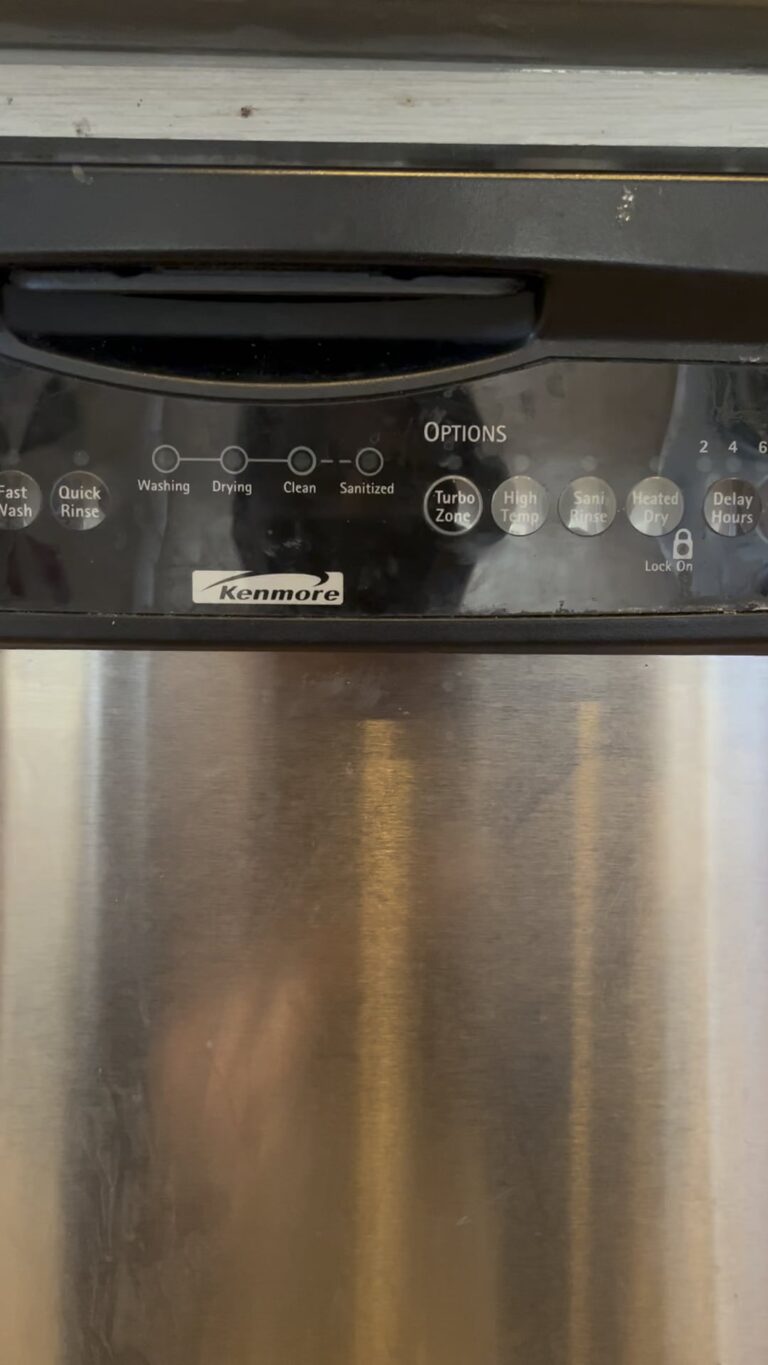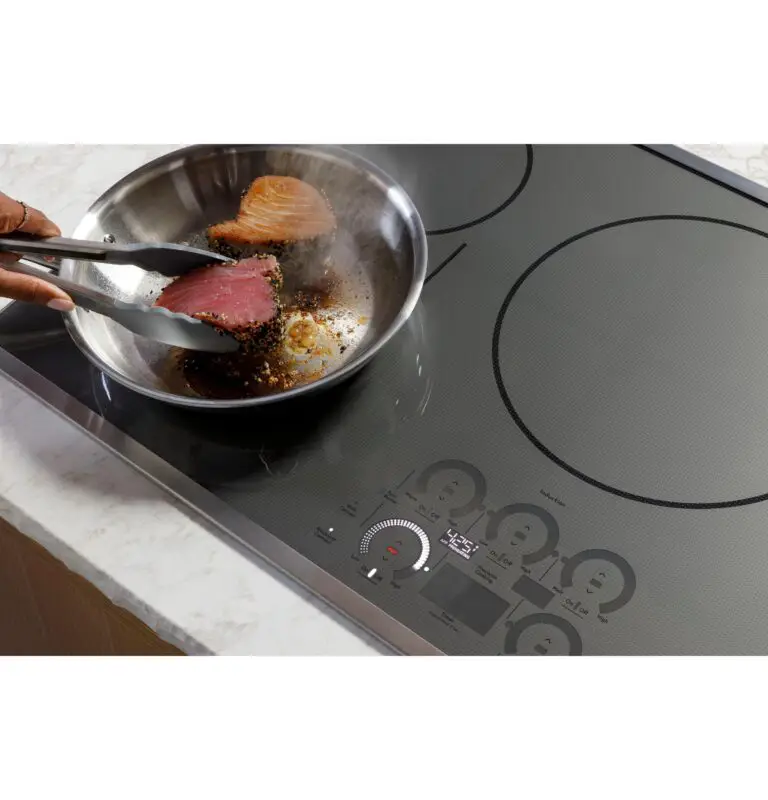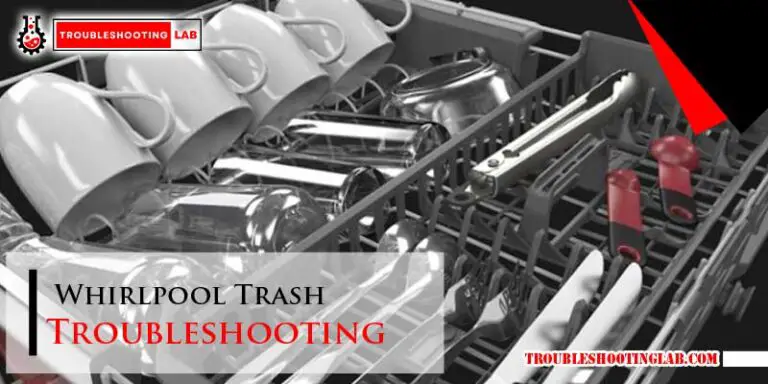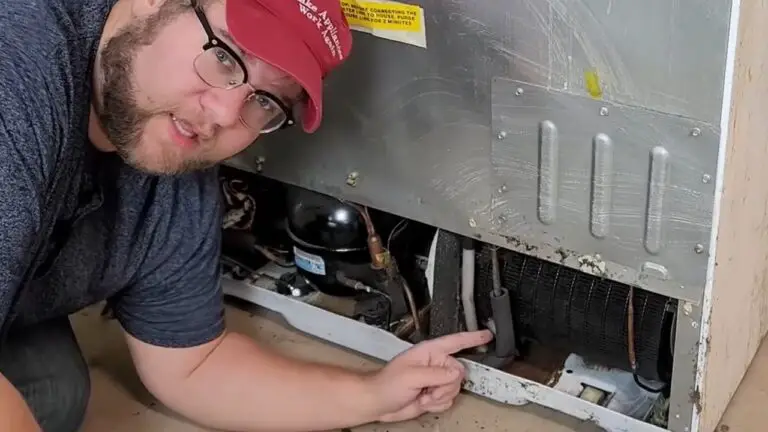Arctic King Freezer Manual Troubleshooting: Quick Fix Guide
Is your Arctic King freezer giving you trouble? Don’t worry—you’re not alone.
Whether it’s not cooling properly, making strange noises, or refusing to power on, these issues can be frustrating. The good news? Many common problems can be solved quickly with the right guidance. In this blog, you’ll discover simple troubleshooting tips straight from the Arctic King freezer manual, so you can get your appliance back to working like new.
Stick around, and you might just save yourself time, money, and the headache of unnecessary repairs. Ready to fix your freezer? Let’s dive in!

Credit: arctic-king.com
Common Freezer Issues
Dealing with freezer problems can be frustrating, especially when you’re unsure of what’s wrong. Arctic King freezers are reliable, but like any appliance, they can run into issues over time. Let’s address some common problems you might face and how to troubleshoot them effectively.
Freezer Not Cooling
Is your freezer failing to keep things cold? First, check if the power cord is securely plugged in and the outlet is working. Sometimes, a tripped breaker or power outage can be the culprit.
Next, inspect the temperature settings. If someone accidentally adjusted the dial, your freezer may not be cooling properly. Keep the setting between -18°C (0°F) and -15°C (5°F) for optimal performance.
Blocked vents can also prevent cooling. Ensure food items aren’t stacked too close to the air vents, as this can restrict airflow and lead to uneven cooling.
Excessive Frost Build-up
Too much frost? This often happens when the freezer door isn’t sealing properly. Check the door gasket (the rubber seal around the door) for cracks, dirt, or gaps. Cleaning it with warm, soapy water can sometimes fix the problem.
Frequent door opening can also cause frost build-up. Make sure you’re not leaving the door open for too long while grabbing items. Additionally, inspect the defrost system if frost keeps forming despite these fixes—it might need professional attention.
Unusual Noises
Hearing strange sounds? A humming noise is normal—it’s just the compressor working. But loud banging, rattling, or clicking noises could indicate a problem.
Loose components, like the condenser fan, can cause rattling. Tighten any loose screws or parts you can access. If the noise persists, consider reaching out to an expert to check for internal issues.
Sometimes, an uneven surface can also cause the freezer to vibrate and make noise. Use a level to ensure the freezer is sitting evenly on the floor. Small adjustments can make a big difference.
Have you encountered any of these issues before? A little troubleshooting can go a long way in extending the life of your Arctic King freezer. Start with these tips, and you’ll likely avoid costly repairs down the road.
Basic Checks Before Troubleshooting
If your Arctic King freezer isn’t working as it should, don’t panic. Often, the issue can be resolved with a few simple checks. Before diving into detailed troubleshooting, take a moment to inspect the basics—it can save you time and effort.
Power Supply Inspection
Start by verifying the power supply. Is the freezer plugged in securely? A loose plug can disrupt power flow. Check the outlet, too—try plugging another device into the same socket to confirm it’s working.
Don’t forget the circuit breaker. A tripped breaker may cut off electricity to the freezer. Reset it if necessary, and see if the freezer powers back on. These small checks can sometimes solve the problem entirely.
Temperature Settings Adjustment
Have you checked the temperature dial? It might have been accidentally adjusted. Sometimes, cleaning or shifting items inside the freezer can lead to an unintended change in settings.
Set the temperature to the recommended level, usually between -18°C and -20°C (-0.4°F to -4°F). Wait a few hours to see if the freezer stabilizes. If you’re unsure of the correct setting, refer to the user manual for guidance.
Door Seal Examination
A faulty door seal can cause big problems. If warm air sneaks into your freezer, it can disrupt cooling. Run your fingers along the seal. Is it cracked, torn, or loose?
You can test the seal with a simple dollar bill trick. Place the bill between the door and the seal, then close the door. If you can pull the bill out easily, the seal may need repairing or replacing. This quick test can pinpoint air leakage that’s affecting performance.
Have you ever overlooked these simple steps before calling for help? It’s surprising how often basic checks resolve the issue. Taking the time to inspect power, settings, and seals can save you from unnecessary stress—and possibly a repair bill.
Cooling Problems Solutions
When your Arctic King freezer struggles to keep your food cold, it can be frustrating and worrisome. But before you think about calling a repair technician, there are a few simple troubleshooting steps you can take. Cooling issues are often caused by components that are dirty, blocked, or not functioning properly. Let’s dig into the solutions.
Cleaning The Condenser Coils
Dirty condenser coils are a common culprit behind cooling problems. These coils are responsible for releasing heat, and when dust and debris collect on them, they can’t work efficiently. This results in your freezer struggling to maintain the right temperature.
Unplug your freezer and locate the condenser coils, usually at the back or bottom of the unit. Use a vacuum or a coil brush to gently remove the dirt. A quick cleaning session every six months can prevent this issue from recurring. Did you know this simple step can save you from bigger problems later?
Checking The Evaporator Fan
The evaporator fan plays a key role in circulating cold air throughout your freezer. If the fan isn’t spinning, you might notice uneven cooling or warmer temperatures. A faulty fan could be blocked, damaged, or simply not getting power.
To check it, unplug the freezer and remove the panel covering the fan inside. Spin it manually to ensure it moves freely. If it doesn’t, inspect for obstructions or consider replacing the fan motor. This quick check can restore consistent airflow and bring your freezer back to optimal performance.
Replacing The Thermostat
If your freezer is still not cooling properly, the thermostat might be the issue. The thermostat controls the temperature inside, and if it’s malfunctioning, your freezer might either overcool or fail to cool at all. A broken thermostat often causes erratic cooling patterns.
Test the thermostat by turning the dial and listening for a clicking sound. No click? It’s likely time for a replacement. Thermostats are relatively inexpensive and can be swapped out with basic tools. Wouldn’t it be satisfying to fix this issue yourself?
Taking these steps can save you time, money, and the hassle of spoiled food. Which solution are you going to try first?
Frost And Ice Build-up Fixes
Dealing with frost and ice build-up in your Arctic King freezer can be frustrating. It takes up precious storage space and might even impact your freezer’s efficiency. The good news is that fixing this issue is often straightforward if you know what to look for and how to address it.
Defrosting The Freezer
Start by manually defrosting your freezer if the frost has gotten out of hand. Unplug the unit and remove all the food. Place towels around the base to catch any melting ice.
To speed up the process, you can use a bowl of hot water inside the freezer or a hairdryer on a low setting. Avoid sharp tools to scrape off the ice—this can damage the freezer’s walls or cooling coils. Once the ice is gone, wipe down the interior and plug it back in. Does the frost return quickly? If so, there might be an underlying issue that needs attention.
Inspecting The Defrost Timer
Many freezers, including Arctic King models, have a defrost timer that controls when the freezer defrosts itself. If this timer malfunctions, frost can accumulate faster than usual. Locate the timer, usually found near the bottom or back of the appliance, and test it by manually advancing it using a screwdriver.
If the timer doesn’t trigger the defrost cycle, it might need replacing. Replacement timers are often affordable and easy to install. You’ll just need the model number of your freezer to ensure you get the right part.
Clearing Blocked Air Vents
Blocked air vents can also lead to frost build-up by disrupting airflow inside the freezer. Check the vents, typically located along the back wall or sides of the unit. Are they covered by food or ice? Clearing them can make a big difference.
Avoid overpacking your freezer, as this can restrict airflow and lead to uneven cooling. Leave a little space around the vents to allow air to circulate properly. Have you noticed frost near the vents? That’s a sign they may need regular clearing to prevent future issues.
Tackling frost and ice build-up doesn’t have to be a headache. By defrosting, checking your defrost timer, and keeping air vents clear, you can keep your Arctic King freezer running smoothly and efficiently. Which of these steps will you try today?
Handling Unusual Noises
Is your Arctic King freezer making odd sounds that disrupt the peace in your kitchen? Unusual noises can be annoying and might signal deeper issues if left unchecked. Understanding and resolving these noises early can save you time, money, and stress.
Identifying The Source Of Noise
Start by pinpointing where the noise is coming from. Is it the back of the freezer, the fan area, or underneath the appliance? Listen closely and observe when the noise happens—does it occur during cooling cycles or all the time?
Common noises include rattling, buzzing, or clicking. A rattling sound might mean something is loose, while buzzing can indicate the compressor is working harder than it should. Clicking could signal a faulty relay or electronic component. Knowing the type of sound helps you troubleshoot more effectively.
Tightening Loose Components
If you hear rattling or vibrating noises, check for loose parts. Inspect the screws, panels, and any visible components. Grab a screwdriver and tighten anything that seems out of place.
Don’t forget to check the freezer’s placement. If it’s not level on the floor, vibrations can amplify. Adjust the feet or place a sturdy mat underneath to stabilize it. Sometimes the simplest fixes make the biggest difference!
Replacing Faulty Fans
A noisy fan can be a major culprit in freezers. If the noise persists after cleaning the fan blades, the motor may need replacement. Look up the model number in your Arctic King freezer manual for compatibility.
Replacing the fan yourself is doable with basic tools. Disconnect the freezer from the power source, remove the back panel, and swap out the faulty fan. If you’re unsure, calling a professional might be safer. Wouldn’t you rather fix it once and for all than risk damaging other parts?
Troubleshooting unusual noises can feel like detective work, but it’s worth the effort. A quieter freezer means less stress and better performance—something every appliance owner appreciates.

Credit: manuals.plus
Maintenance Tips For Longevity
Maintaining your Arctic King freezer properly can extend its lifespan. Regular care ensures optimal performance and prevents common issues. Following simple maintenance tips can save you time and money on repairs. Here are some easy steps to keep your freezer running smoothly for years.
Regular Cleaning Routine
Clean your freezer every three months to prevent dirt buildup. Remove all food items and unplug the freezer before cleaning. Use a soft cloth and mild detergent to wipe the interior surfaces. Avoid harsh chemicals that can damage the freezer lining. Clean the door seals with warm, soapy water to maintain a tight seal.
Inspect the freezer for spills or stains and clean them immediately. Spills can freeze and become hard to remove later. Keeping the freezer clean reduces odors and ensures efficient cooling.
Avoiding Overloading
Do not overfill your freezer with too many items. Overloading reduces airflow, making it harder for the freezer to cool evenly. Leave some space between items to allow proper air circulation.
Use storage baskets or bins to organize food items neatly. This helps you find items quickly and prevents unnecessary strain on the freezer. Proper organization also ensures the freezer works efficiently without consuming extra energy.
Ensuring Proper Ventilation
Place your freezer in a well-ventilated area with enough space around it. Keep at least 3 inches of clearance between the freezer and walls. Proper ventilation prevents overheating and improves energy efficiency.
Check the condenser coils at the back or bottom of the freezer. Dust or debris on the coils can block airflow and affect cooling. Clean the coils every six months using a vacuum or a soft brush.
Ensure the freezer is level to avoid strain on the compressor. A stable freezer runs quietly and performs better over time.
When To Call A Professional
Sometimes, no matter how handy you are, your Arctic King freezer might need professional help. While minor issues like a loose hinge or frost buildup can be resolved at home, certain problems demand expert attention. Knowing when to step back and make that call can save you time, money, and frustration.
Signs Of Major Repairs
If your freezer stops cooling entirely, it’s time to act. This could indicate a compressor failure or a refrigerant leak—issues that require specialized tools and skills. Don’t ignore loud, persistent noises either; they can point to damaged internal parts.
Electrical issues, like flickering lights or tripped circuits, are another red flag. Trying to fix these on your own could lead to safety hazards or further damage. If you notice water pooling at the base of your freezer, it might mean a damaged seal or a clogged drainage system that needs professional attention.
Warranty And Service Options
Before spending money on repairs, check your warranty. Arctic King freezers often come with coverage for specific issues, such as compressor defects. Keep your purchase receipt handy—it’s usually required for warranty claims.
Look into authorized service centers listed in your manual. These technicians are trained to handle Arctic King products and will ensure your freezer is repaired correctly. If your warranty has expired, ask if the manufacturer offers extended service plans or discounts for repairs.
Are you confident your freezer issue is beyond DIY fixes? Calling a professional might be your safest bet. Don’t let a small problem turn into a costly mistake.
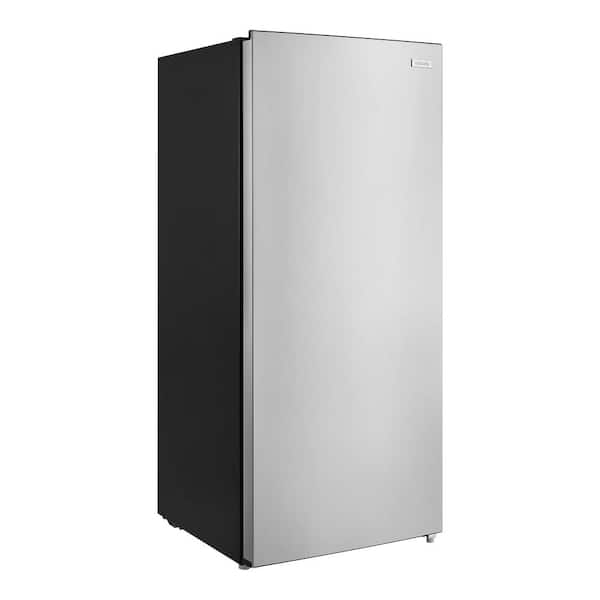
Credit: www.homedepot.com
Conclusion
Troubleshooting your Arctic King freezer can save time and prevent frustration. Always check basic issues like power supply and settings first. Many problems have simple solutions that don’t require expert help. For more complex issues, consult the manual or contact support.
Regular maintenance can also help avoid future problems. Keep your freezer clean and organized to ensure optimal performance. A little attention can go a long way in maintaining your appliance. With these tips, you can keep your Arctic King freezer running smoothly for years to come.

